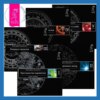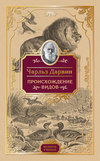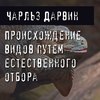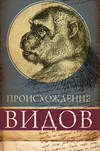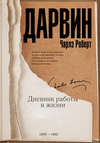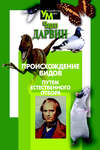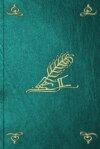Читать книгу: «More Letters of Charles Darwin — Volume 1», страница 29
I am very much obliged for your photograph, which I am particularly glad to possess, and I send mine in return.
I see you allude to Hilgendorf's statements, which I was sorry to see disputed by some good German observer. Mr. Hyatt, an excellent palaeontologist of the United States, visited the place, and likewise assured me that Hilgendorf was quite mistaken. (268/4. See Letters 252-7.)
I am grieved to hear that your eyesight still continues bad, but anyhow it has forced your excellent work in your last essay.
May 4th. Here is what Mr. Weir says: —
"In reply to your inquiry of Saturday, I regret that I have little to add to my two communications to the 'Entomological Society Transactions.'
"I repeated the experiments with gaudy caterpillars for years, and always with the same results: not on a single occasion did I find richly coloured, conspicuous larvae eaten by birds. It was more remarkable to observe that the birds paid not the slightest attention to gaudy caterpillars, not even when in motion, — the experiments so thoroughly satisfied my mind that I have now given up making them."
LETTER 269. TO LAWSON TAIT.
(269/1. The late Mr. Lawson Tait wrote to Mr. Darwin (June 2nd, 1875): "I am watching a lot of my mice from whom I removed the tails at birth, and I am coming to the conclusion that the essential use of the tail there is as a recording organ — that is, they record in their memories the corners they turn and the height of the holes they pass through by touching them with their tails." Mr. Darwin was interested in the idea because "some German sneered at Natural Selection and instanced the tails of mice.")
June 11th, 1875.
It has just occurred to me to look at the "Origin of Species" (Edition VI., page 170), and it is certain that Bronn, in the appended chapter to his translation of my book into german, did advance ears and tail of various species of mice as a difficulty opposed to Natural Selection. I answered with respect to ears by alluding to Schobl's curious paper (I forget when published) (269/2. J. Schobl, "Das aussere Ohr der Mause als wichtiges Tastorgan." "Archiv. Mik. Anat." VII., 1871, page 260.) on the hairs of the ears being sensitive and provided with nerves. I presume he made fine sections: if you are accustomed to such histological work, would it not be worth while to examine hairs of tail of mice? At page 189 I quote Henslow (confirmed by Gunther) on Mus messorius (and other species?) using tail as prehensile organ.
Dr. Kane in his account of the second Grinnell Expedition says that the Esquimaux in severe weather carry a fox-tail tied to the neck, which they use as a respirator by holding the tip of the tail between their teeth. (269/3. The fact is stated in Volume II., page 24, of E.K. Kane's "Arctic Explorations: The Second Grinnell Expedition in Search of Sir John Franklin." Philadelphia, 1856.)
He says also that he found a frozen fox curled up with his nose buried in his tail.
N.B. It is just possible that the latter fact is stated by M'Clintock, not by Dr. Kane.
(269/4. The final passage is a postscript by Mr. W.E. Darwin bearing on Mr. Lawson Tait's idea of the respirator function of the fox's tail.)
LETTER 270. TO G.J. ROMANES. Down, July 12th, 1875.
I am correcting a second edition of "Variation under Domestication," and find that I must do it pretty fully. Therefore I give a short abstract of potato graft-hybrids, and I want to know whether I did not send you a reference about beet. Did you look to this, and can you tell me anything about it?
I hope with all my heart that you are getting on pretty well with your experiments.
I have been led to think a good deal on the subject, and am convinced of its high importance, though it will take years of hammering before physiologists will admit that the sexual organs only collect the generative elements.
The edition will be published in November, and then you will see all that I have collected, but I believe that you gave all the more important cases. The case of vine in "Gardeners' Chronicle," which I sent you, I think may only be a bud-variation not due to grafting. I have heard indirectly of your splendid success with nerves of medusae. We have been at Abinger Hall for a month for rest, which I much required, and I saw there the cut-leaved vine which seems splendid for graft hybridism.
LETTER 271. TO FRANCIS GALTON. Down, November 7th, 1875.
I have read your essay with much curiosity and interest, but you probably have no idea how excessively difficult it is to understand. (271/1. "A Theory of Heredity" ("Journal of the Anthropological Institute," 1875). In this paper Mr. Galton admits that the hypothesis of organic units "must lie at the foundation of the science of heredity," and proceeds to show in what respect his conception differs from the hypothesis of pangenesis. The copy of Mr. Galton's paper, which Darwin numbered in correspondence with the criticisms in his letter, is not available, and we are therefore only able to guess at some of the points referred to.) I cannot fully grasp, only here and there conjecture, what are the points on which we differ. I daresay this is chiefly due to muddy-headedness on my part, but I do not think wholly so. Your many terms, not defined, "developed germs," "fertile," and "sterile germs" (the word "germ" itself from association misleading to me) "stirp," "sept," "residue," etc., etc., quite confounded me. If I ask myself how you derive, and where you place the innumerable gemmules contained within the spermatozoa formed by a male animal during its whole life, I cannot answer myself. Unless you can make several parts clearer I believe (though I hope I am altogether wrong) that only a few will endeavour or succeed in fathoming your meaning. I have marked a few passages with numbers, and here make a few remarks and express my opinion, as you desire it, not that I suppose it will be of any use to you.
1. If this implies that many parts are not modified by use and disuse during the life of the individual, I differ widely from you, as every year I come to attribute more and more to such agency. (271/2. This seems to refer to page 329 of Mr. Galton's paper. The passage must have been hastily read, and has been quite misunderstood. Mr. Galton has never expressed the view attributed to him.)
2. This seems rather bold, as sexuality has not been detected in some of the lowest forms, though I daresay it may hereafter be. (271/3. Mr. Galton, op. cit., pages 332-3: "There are not of a necessity two sexes, because swarms of creatures of the simplest organisations mainly multiply by some process of self-division.")
3. If gemmules (to use my own term) were often deficient in buds, I cannot but think that bud-variations would be commoner than they are in a state of nature; nor does it seem that bud-variations often exhibit deficiencies which might be accounted for by the absence of the proper gemmules. I take a very different view of the meaning or cause of sexuality. (271/4. Mr. Galton's idea is that in a bud or other asexually produced part, the germs (i.e. gemmules) may not be completely representative of the whole organism, and if reproduction is continued asexually "at each successive stage there is always a chance of some one or more of the various species of germs... dying out" (page 333). Mr. Galton supposes, in sexual reproduction, where two parents contribute germs to the embryo the chance of deficiency of any of the necessary germs is greatly diminished. Darwin's "very different view of the meaning or cause of sexuality" is no doubt that given in "Cross and Self Fertilisation" — i.e., that sexuality is equivalent to changed conditions, that the parents are not representative of different sexes, but of different conditions of life.)
4. I have ordered "Fraser's Magazine" (271/5. "The History of Twins," by F. Galton, "Fraser's Magazine," November, 1875, republished with additions in the "Journal of the Anthropological Institute," 1875. Mr. Galton explains the striking dissimilarity of twins which is sometimes met with by supposing that the offspring in this case divide the available gemmules between them in such a way that each is the complement of the other. Thus, to put the case in an exaggerated way, similar twins would each have half the gemmules A, B, C...Z., etc, whereas, in the case of dissimilar twins, one would have all the gemmules A, B, C, D...M, and the other would have N...Z.), and am curious to learn how twins from a single ovum are distinguished from twins from two ova. Nothing seems to me more curious than the similarity and dissimilarity of twins.
5. Awfully difficult to understand.
6. I have given almost the same notion.
7. I hope that all this will be altered. I have received new and additional cases, so that I have now not a shadow of doubt.
8. Such cases can hardly be spoken of as very rare, as you would say if you had received half the number of cases I have.
(271/6. We are unable to determine to what paragraphs 5, 6, 7, 8 refer.)
I am very sorry to differ so much from you, but I have thought that you would desire my open opinion. Frank is away, otherwise he should have copied my scrawl.
I have got a good stock of pods of sweet peas, but the autumn has been frightfully bad; perhaps we may still get a few more to ripen.
LETTER 272. TO T.H. HUXLEY. Down, November 12th {1875}.
Many thanks for your "Biology," which I have read. (272/1. "A Course of Practical Instruction in Elementary Biology," by T.H. Huxley and H.N. Martin, 1875. For an account of the book see "Life and Letters of T.H. Huxley," Volume I., page 380.) It was a real stroke of genius to think of such a plan. Lord, how I wish I had gone through such a course!
LETTER 273. TO FRANCIS GALTON. December 18th {1875}.
George has been explaining our differences. I have admitted in the new edition (273/1. In the second edition (1875) of the "Variation of Animals and Plants," Volume II., page 350, reference is made to Mr. Galton's transfusion experiments, "Proc. R. Soc." XIX., page 393; also to Mr. Galton's letter to "Nature," April 27th, 1871, page 502. This is a curious mistake; the letter in "Nature," April 27th, 1871, is by Darwin himself, and refers chiefly to the question whether gemmules may be supposed to be in the blood. Mr. Galton's letter is in "Nature," May 4th, 1871, Volume IV., page 5. See Letter 235.) (before seeing your essay) that perhaps the gemmules are largely multiplied in the reproductive organs; but this does not make me doubt that each unit of the whole system also sends forth its gemmules. You will no doubt have thought of the following objection to your views, and I should like to hear what your answer is. If two plants are crossed, it often, or rather generally, happens that every part of stem, leaf, even to the hairs, and flowers of the hybrid are intermediate in character; and this hybrid will produce by buds millions on millions of other buds all exactly reproducing the intermediate character. I cannot doubt that every unit of the hybrid is hybridised and sends forth hybridised gemmules. Here we have nothing to do with the reproductive organs. There can hardly be a doubt from what we know that the same thing would occur with all those animals which are capable of budding, and some of these (as the compound Ascidians) are sufficiently complex and highly organised.
LETTER 274. TO LAWSON TAIT. March 25th, 1876.
(274/1. The reference is to the theory put forward in the first edition of "Variation of Animals and Plants," II., page 15, that the asserted tendency to regeneration after the amputation of supernumerary digits in man is a return to the recuperative powers characteristic of a "lowly organised progenitor provided with more than five digits." Darwin's recantation is at Volume I., page 459 of the second edition.)
Since reading your first article (274/2. Lawson Tait wrote two notices on "The Variation of Animals and Plants under Domestication" in the "Spectator" of March 4th, 1876, page 312, and March 25th, page 406.), Dr. Rudinger has written to me and sent me an essay, in which he gives the results of the MOST EXTENSIVE inquiries from all eminent surgeons in Germany, and all are unanimous about non-growth of extra digits after amputation. They explain some apparent cases, as Paget did to me. By the way, I struck out of my second edition a quotation from Sir J. Simpson about re-growth in the womb, as Paget demurred, and as I could not say how a rudiment of a limb due to any cause could be distinguished from an imperfect re-growth. Two or three days ago I had another letter from Germany from a good naturalist, Dr. Kollmann (274/3. Dr. Kollmann was Secretary of the Anthropologische Gesellschaft of Munich, in which Society took place the discussion referred to in "Variation of Animals and Plants," I., 459, as originating Darwin's doubts on the whole question. The fresh evidence adduced by Kollmann as to the normal occurrence of a rudimentary sixth digit in Batrachians is Borus' paper, "Die sechste Zehe der Anuren" in "Morpholog. Jahrbuch," Bd. I., page 435. On this subject see Letter 178.), saying he was sorry that I had given up atavism and extra digits, and telling me of new and good evidence of rudiments of a rudimentary sixth digit in Batrachians (which I had myself seen, but given up owing to Gegenbaur's views); but, with re-growth failing me, I could not uphold my old notion.
LETTER 275. TO G.J. ROMANES.
(275/1. Mr. Romanes' reply to this letter is printed in his "Life and Letters," page 93, where by an oversight it is dated 1880-81.)
H. Wedgwood, Esq., Hopedene, Dorking, May 29th {1876}.
As you are interested in pangenesis, and will some day, I hope, convert an "airy nothing" into a substantial theory, I send by this post an essay by Hackel (275/2. "Die Perigenesis der Plastidule oder die Wellenzeugung der Lebenstheilchen," 79 pages. Berlin, 1876.) attacking Pan. and substituting a molecular hypothesis. If I understand his views rightly, he would say that with a bird which strengthened its wings by use, the formative protoplasm of the strengthened parts became changed, and its molecular vibrations consequently changed, and that these vibrations are transmitted throughout the whole frame of the bird, and affect the sexual elements in such a manner that the wings of the offspring are developed in a like strengthened manner. I imagine he would say, in cases like those of Lord Morton's mare (275/3. A nearly pure-bred Arabian chestnut mare bore a hybrid to a quagga, and subsequently produced two striped colts by a black Arabian horse: see "Animals and Plants," I., page 403. The case was originally described in the "Philosophical Transactions," 1821, page 20. For an account of recent work bearing on this question, see article on "Zebras, Horses, and Hybrids," in the "Quarterly Review," October 1899. See Letter 235.), that the vibrations from the protoplasm, or "plasson," of the seminal fluid of the zebra set plasson vibrating in the mare; and that these vibrations continued until the hair of the second colt was formed, and which consequently became barred like that of a zebra. How he explains reversion to a remote ancestor, I know not. Perhaps I have misunderstood him, though I have skimmed the whole with some care. He lays much stress on inheritance being a form of unconscious memory, but how far this is part of his molecular vibration, I do not understand. His views make nothing clearer to me; but this may be my fault. No one, I presume, would doubt about molecular movements of some kind. His essay is clever and striking. If you read it (but you must not on my account), I should much like to hear your judgment, and you can return it at any time. The blue lines are Hackel's to call my attention.
We have come here for rest for me, which I have much needed; and shall remain here for about ten days more, and then home to work, which is my sole pleasure in life. I hope your splendid Medusa work and your experiments on pangenesis are going on well. I heard from my son Frank yesterday that he was feverish with a cold, and could not dine with the physiologists, which I am very sorry for, as I should have heard what they think about the new Bill. I see that you are one of the secretaries to this young Society.
LETTER 276. TO H.N. MOSELEY. Down, November 22nd {1876}.
It is very kind of you to send me the Japanese books, which are extremely curious and amusing. My son Frank is away, but I am sure he will be much obliged for the two papers which you have sent him.
Thanks, also, for your interesting note. It is a pity that Peripatus (276/1. Moseley "On the Structure and Development of Peripatus capensis" ("Phil. Trans. R. Soc." Volume 164, page 757, 1874). "When suddenly handled or irritated, they (i.e. Peripatus) shoot out fine threads of a remarkably viscid and tenacious milky fluid... projected from the tips of the oral papillae" (page 759).) is so stupid as to spit out the viscid matter at the wrong end of its body; it would have been beautiful thus to have explained the origin of the spider's web.
LETTER 277. NAPHTALI LEWY TO CHARLES DARWIN.
(277/1. The following letter refers to a book, "Toledoth Adam," written by a learned Jew with the object of convincing his co-religionists of the truth of the theory of evolution. The translation we owe to the late Henry Bradshaw, University Librarian at Cambridge. The book is unfortunately no longer to be found in Mr. Darwin's library.)
{1876}.
To the Lord, the Prince, who "stands for an ensign of the people" (Isa. xi. 10), the Investigator of the generation, the "bright son of the morning" (Isa. xiv. 12), Charles Darwin, may he live long!
"From the rising of the sun and from the west" (Isa. xlv. 6) all the nations know concerning the Torah (Theory) (277/2. Lit., instruction. The Torah is the Pentateuch, strictly speaking, the source of all knowledge.) which has "proceeded from thee for a light of the people" (Isa. li. 4), and the nations "hear and say, It is truth" (Isa. xliii. 9). But with "the portion of my people" (Jer. x. 16), Jacob, "the lot of my inheritance" (Deut. xxxii. 9), it is not so. This nation, "the ancient people" (Isa. xliv. 7), which "remembers the former things and considers the things of old (Isa. xliii. 18), "knows not, neither doth it understand" (Psalm lxxxii. 5), that by thy Torah (instruction or theory) thou hast thrown light upon their Torah (the Law), and that the eyes of the Hebrews (277/3. One letter in this word changed would make the word "blind," which is what Isaiah uses in the passage alluded to.) "can now see out of obscurity and out of darkness" (Isa. xxix. 18). Therefore "I arose" (Judges v. 7) and wrote this book, "Toledoth Adam" ("the generations of man," Gen. v. 1), to teach the children of my people, the seed of Jacob, the Torah (instruction) which thou hast given for an inheritance to all the nations of the earth.
And I have "proceeded to do a marvellous work among this people, even a marvellous work and a wonder" (Isa. xxix. 14), enabling them now to read in the Torah of Moses our teacher, "plainly and giving the sense" (Neh. viii. 8), that which thou hast given in thy Torahs (works of instruction). And when my people perceive that thy view has by no means "gone astray" (Num. v. 12, 19, etc.) from the Torah of God, they will hold thy name in the highest reverence, and "will at the same time glorify the God of Israel" (Isa. xxix. 23).
"The vision of all this" (Isa. xxix. 11) thou shalt see, O Prince of Wisdom, in this book, "which goeth before me" (Gen. xxxii. 21); and whatever thy large understanding finds to criticise in it, come, "write it in a table and note it in a book" (Isa. xxx. 8); and allow me to name my work with thy name, which is glorified and greatly revered by
Thy servant, Naphtali Hallevi {i.e. the Levite}.
Dated here in the city of Radom, in the province of Poland, in the month of Nisan in the year 636, according to the lesser computation (i.e. A.M. {5}636 = A.D. 1876).
LETTER 278. TO OTTO ZACHARIAS. 1877.
When I was on board the "Beagle" I believed in the permanence of species, but, as far as I can remember, vague doubts occasionally flitted across my mind. On my return home in the autumn of 1836 I immediately began to prepare my journal for publication, and then saw how many facts indicated the common descent of species (278/1. "The facts to which reference is here made were, without doubt, eminently fitted to attract the attention of a philosophical thinker; but until the relations of the existing with the extinct species and of the species of the different geographical areas, with one another were determined with some exactness, they afforded but an unsafe foundation for speculation. It was not possible that this determination should have been effected before the return of the "Beagle" to England; and thus the date which Darwin (writing in 1837) assigns to the dawn of the new light which was rising in his mind becomes intelligible." — From "Darwiniana," Essays by Thomas H. Huxley, London, 1893; pages 274-5.), so that in July, 1837, I opened a notebook to record any facts which might bear on the question; but I did not become convinced that species were mutable until, I think, two or three years had elapsed. (278/2. On this last point see page 38.)
LETTER 279. TO G.J. ROMANES.
(279/1. The following letter refers to MS. notes by Romanes, which we have not seen. Darwin's remarks on it are, however, sufficiently clear.)
My address will be "Bassett, Southampton," June 11th {1877}.
I have received the crossing paper which you were so kind as to send me. It is very clear, and I quite agree with it; but the point in question has not been a difficulty to me, as I have never believed in a new form originating from a single variation. What I have called unconscious selection by man illustrates, as it seems to me, the same principle as yours, within the same area. Man purchases the individual animals or plants which seem to him the best in any respect — some more so, and some less so — and, without any matching or pairing, the breed in the course of time is surely altered. The absence in numerous instances of intermediate or blending forms, in the border country between two closely allied geographical races or close species, seemed to me a greater difficulty when I discussed the subject in the "Origin."
With respect to your illustration, it formerly drove me half mad to attempt to account for the increase or diminution of the productiveness of an organism; but I cannot call to mind where my difficulty lay. (279/2. See Letters 209-16.) Natural Selection always applies, as I think, to each individual and its offspring, such as its seeds, eggs, which are formed by the mother, and which are protected in various ways. (279/3. It was in regard to this point that Romanes had sent the MS. to Darwin. In a letter of June 16th he writes: "It was with reference to the possibility of Natural Selection acting on organic types as distinguished from individuals, — a possibility which you once told me did not seem at all clear.") There does not seem any difficulty in understanding how the productiveness of an organism might be increased; but it was, as far as I can remember, in reducing productiveness that I was most puzzled. But why I scribble about this I know not.
I have read your review of Mr. Allen's book (279/4. See "Nature" (June 7th, 1877, page 98), a review of Grant Allen's "Physiological Aesthetics."), and it makes me more doubtful, even, than I was before whether he has really thrown much light on the subject.
I am glad to hear that some physiologists take the same view as I did about your giving too much credit to H. Spencer — though, heaven knows, this is a rare fault. (279/5. The reference is to Romanes' lecture on Medusa, given at the Royal Institution, May 25th. (See "Nature," XVI., pages 231, 269, 289.) It appears from a letter of Romanes (June 6th) that it was the abstract in the "Times" that gave the impression referred to. References to Mr. Spencer's theories of nerve-genesis occur in "Nature," pages 232, 271, 289.)
The more I think of your medusa-nerve-work the more splendid it seems to me.
LETTER 280. TO A. DE CANDOLLE. Down, August 3rd, 1877.
I must have the pleasure of thanking you for your long and interesting letter. The cause and means of the transition from an hermaphrodite to a unisexual condition seems to me a very perplexing problem, and I shall be extremely glad to read your remarks on Smilax, whenever I receive the essay which you kindly say that you will send me. (280/1. "Monographiae Phanerogamarum," Volume I. In his treatment of the Smilaceae, De Candolle distinguishes: — Heterosmilax which has dioecious flowers without a trace of aborted stamens or pistils, Smilax with sterile stamens in the female flowers, and Rhipogonum with hermaphrodite flowers.) There is much justice in your criticisms (280/2. The passage criticised by De Candolle is in "Forms of Flowers" (page 7): "It is a natural inference that their corollas have been increased in size for this special purpose." De Candolle goes on to give an account of the "recherche linguistique," which, with characteristic fairness, he undertook to ascertain whether the word "purpose" differs in meaning from the corresponding French word "but.") on my use of the terms object, end, purpose; but those who believe that organs have been gradually modified for Natural Selection for a special purpose may, I think, use the above terms correctly, though no conscious being has intervened. I have found much difficulty in my occasional attempts to avoid these terms, but I might perhaps have always spoken of a beneficial or serviceable effect. My son Francis will be interested by hearing about Smilax. He has dispatched to you a copy of his paper on the glands of Dipsacus (280/3. "Quart. Journ. Mic. Sci." 1877.), and I hope that you will find time to read it, for the case seems to me a new and highly remarkable one. We are now hard at work on an attempt to make out the function or use of the bloom or waxy secretion on the leaves and fruit of many plants; but I doubt greatly whether our experiments will tell us much. (280/4. "As it is we have made out clearly that with some plants (chiefly succulent) the bloom checks evaporation — with some certainly prevents attacks of insects; with some sea-shore plants prevents injury from salt-water, and I believe, with a few prevents injury from pure water resting on the leaves." (See letter to Sir W. Thiselton-Dyer, "Life and Letters," III., page 341. A paper on the same subject by Francis Darwin was published in the "Journ. Linn. Soc." XXII.)) If you have any decided opinion whether plants with conspicuously glaucous leaves are more frequent in hot than in temperate or cold, in dry than in damp countries, I should be grateful if you would add to your many kindnesses by informing me. Pray give my kind remembrances to your son, and tell him that my son has been trying on a large scale the effects of feeding Drosera with meat, and the results are most striking and far more favourable than I anticipated.
LETTER 281. TO G.J. ROMANES.
(281/1. Published in the "Life and Letters" of Romanes, page 66.)
Down, Saturday Night {1877}.
I have just finished your lecture (281/2. "The Scientific Evidence of Organic Evolution: a Discourse" (delivered before the Philosophical Society of Ross-shire), Inverness, 1877. It was reprinted in the "Fortnightly Review," and was afterwards worked up into a book under the above title.); it is an admirable scientific argument, and most powerful. I wish that it could be sown broadcast throughout the land. Your courage is marvellous, and I wonder that you were not stoned on the spot — and in Scotland! Do please tell me how it was received in the Lecture Hall. About man being made like a monkey (page 37 (281/3. "And if you reject the natural explanation of hereditary descent, you can only suppose that the Deity, in creating man, took the most scrupulous pains to make him in the image of the ape" ("Discourse," page 37).)) is quite new to me, and the argument in an earlier place (page 8 (281/4. At page 8 of the "Discourse" the speaker referred to the law "which Sir William Hamilton called the Law of Parsimony — or the law which forbids us to assume the operation of higher causes when lower ones are found sufficient to explain the desired effects," as constituting the "only logical barrier between Science and Superstition.")) on the law of parsimony admirably put. Yes, page 21 (281/5. "Discourse," page 21. If we accept the doctrines of individual creations and ideal types, we must believe that the Deity acted "with no other apparent motive than to suggest to us, by every one of the observable facts, that the ideal types are nothing other than the bonds of a lineal descent.") is new to me. All strike me as very clear, and, considering small space, you have chosen your lines of reasoning excellently.
The few last pages are awfully powerful, in my opinion.
Sunday Morning. — The above was written last night in the enthusiasm of the moment, and now — this dark, dismal Sunday morning — I fully agree with what I said.
I am very sorry to hear about the failures in the graft experiments, and not from your own fault or ill-luck. Trollope in one of his novels gives as a maxim of constant use by a brickmaker — "It is dogged as does it" (281/6. "Tell 'ee what, Master Crawley; — and yer reverence mustn't think as I means to be preaching; there ain't nowt a man can't bear if he'll only be dogged. You go whome, Master Crawley, and think o' that, and may be it'll do ye a good yet. It's dogged as does it. It ain't thinking about it." (Giles Hoggett, the old Brickmaker, in "The Last Chronicle of Barset," Volume II., 1867, page 188.)) — and I have often and often thought that this is the motto for every scientific worker. I am sure it is yours — if you do not give up pangenesis with wicked imprecations.
Покупайте книги и получайте бонусы в Литрес, Читай-городе и Буквоеде.
Участвовать в бонусной программе





